In the ever-evolving digital landscape, mastering blog SEO has emerged as a crucial strategy to enhance online visibility and drive organic traffic. SEO, or Search Engine Optimization, encompasses strategies designed to enhance the visibility of web pages within search engine results pages (SERPs). For bloggers, understanding and implementing SEO is essential not just for attracting visitors but for ensuring that content reaches the right audience.
The Role of SEO in Driving Organic Traffic
Search engines like Google use complex algorithms to rank websites based on relevance and quality. By optimizing your blog posts with focus keywords, high-quality content, and proper on-page techniques, you can significantly improve your chances of appearing higher in search results. This heightened visibility translates into more clicks and increased organic traffic, which is invaluable for growing your readership and influence.
What You’ll Learn from This Article
This article will equip you with 10 essential SEO tips every blogger should know:
Understanding Keyword Research: Learn how to identify relevant keywords for your niche using tools like Semrush.
Creating High-Quality Content That Ranks Well: Discover strategies for writing engaging and informative posts that meet search intent.
Implementing On-Page SEO Techniques Effectively: Optimize your blog posts with headings, subheadings, and internal linking.
Structuring Your Blog Posts for Readability and SEO Benefits: Use clear formats to keep readers engaged while boosting search rankings.
Crafting Catchy Titles and Optimized Meta Descriptions: Create compelling titles that attract clicks and improve visibility. For insights on crafting effective headlines, refer to this article.
Regularly Updating Your Content: Understand the importance of keeping your content fresh and relevant.
Optimizing Visual Content: Enhance user experience with images optimized for SEO.
Ensuring Mobile Responsiveness: Design a mobile-friendly blog to cater to users across all devices.
Building a Strong Link Profile: Employ ethical link-building strategies to strengthen your site’s authority.
Monitoring Your Ongoing SEO Performance: Use analytics tools to track key metrics and make data-driven improvements.
By implementing these strategies, you’ll be well on your way to improving your blog’s SEO performance. Ready to dive in? Let’s explore each tip in detail!
For a deeper understanding of what SEO is and its importance, check out this comprehensive guide.
1. Understanding Keyword Research
Definition of Keyword Research and its Importance in SEO Strategy
Identifying the language people use when seeking online information is at the core of keyword research. These target keywords are essential in crafting an effective SEO strategy. By uncovering the search terms your audience uses, you can develop content that addresses their queries, thereby boosting your visibility in search engine rankings.
How to Identify Relevant Keywords for Your Niche Using Tools Like Semrush
To identify relevant keywords for your niche:
Use Keyword Research Tools: Platforms like Semrush offer comprehensive keyword research tools that help you discover high-traffic terms related to your blog’s niche.
Analyze Search Volume and Competition: Look for keywords with a high search volume but low competition. This balance ensures that your content has a good chance of ranking well without being overshadowed by more established sites.
Study Your Competitors: Examine the keywords your competitors are targeting to find gaps and opportunities.
Additionally, consider how other search engines like Bing and Yahoo rank content to ensure comprehensive optimization.
For example, if you run a food blog, using Semrush could reveal that “easy vegan recipes” have a high search volume but moderate competition. This insight allows you to create content tailored to this keyword, potentially driving more traffic to your site.
Focusing on Long-Tail Keywords for Better Targeting and Higher Conversion Rates
Long-tail keywords are longer, more specific phrases that users type into Google Search. Because they cater to more precise search intents, these keywords often have lower search volumes but higher conversion rates.
Benefits of Focusing on Long-Tail Keywords:
Enhanced Audience Focus: Long-tail keywords enable you to reach specialized segments seeking particular information or offerings.
Higher Conversion Rates: Users typing long-tail queries are often closer to making a purchase or decision, leading to higher conversion rates.
For example, instead of focusing on a wide category like “shoes,” you could narrow it down to “top running shoes for flat feet.” While it attracts fewer searches, those who do search are more likely to be interested in purchasing running shoes tailored for flat feet.
Practical Steps for Incorporating Keywords:
Identify Main Keywords: Start with broad terms relevant to your blog.
Find Long-Tail Variations: Use tools like Semrush or Google Keyword Planner to discover long-tail variations of your main keyword.
Integrate Strategically: Place these keywords naturally throughout your content, including headings, subheadings, and body text.
By leveraging keyword research effectively, you lay the foundation for a robust SEO strategy that drives organic traffic and meets user intent.
2. Creating High-Quality Content That Ranks Well
Quality content is the cornerstone of a successful SEO strategy. Search engines like Google prioritize user experience, and high-quality content directly contributes to this.
The Relationship Between Content Quality and SEO Success
High-quality content is more likely to be shared, linked to, and engaged with, which signals to search engines that your site is valuable. This boosts your site’s authority and can lead to higher rankings. Simply put, content optimization is essential for SEO success.
Characteristics of High-Quality Blog Posts
Creating content that both readers and search engines love involves several key characteristics:
Relevance: Addressing topics that are important to your target audience.
Depth: Providing comprehensive coverage of the subject.
Clarity: Writing in a clear, concise manner.
Originality: Offering unique insights or perspectives.
Accuracy: Ensuring information is factual and up-to-date.
Strategies for Writing Engaging and Informative Content
Understand Search Intent:
Identify what your audience is searching for and tailor your content to meet those needs.
Use keyword research tools to find relevant terms and understand user queries.
Structure Your Content:
Break content into manageable sections with clear headings (H2, H3).
Use bullet points and numbered lists for easy readability.
Engage Your Readers:
Start with a compelling introduction that hooks the reader.
Incorporate multimedia elements like images and videos.
Include internal links to related posts within your blog.
Optimize for SEO
Naturally incorporate primary keywords throughout your post.
Use alt text for images to enhance their search visibility.
Update Regularly:
Keep your content fresh by updating older posts with new information or perspectives.
For an in-depth guide on optimizing WordPress blogs, check out xSquare’s Guide to WordPress SEO Plugins. These plugins can significantly enhance your site’s performance in areas like optimization, social media integration, technical SEO, and analytics.
Creating high-quality, SEO-friendly content isn’t just about ranking; it’s about providing real value to your readers. This approach not only improves your search engine rankings but also builds trust and credibility with your audience.
3. Implementing On-Page SEO Techniques Effectively
Optimizing individual blog posts for search engines involves a series of on-page SEO techniques that ensure your content is both user-friendly and accessible to search engines. Understanding and applying these methods can significantly enhance your blog’s visibility and performance.
Overview of On-Page SEO
On-page SEO refers to all the actions you take within your website to improve its ranking on search engine results pages (SERPs). Unlike off-page SEO, which focuses on external signals like backlinks, on-page SEO deals with optimizing individual web pages to make them more appealing to both users and search engines.
Key elements of on-page SEO include:
- Title Tags: The title tag is one of the first things both users and search engines see. It should be descriptive, include primary keywords, and be compelling enough to encourage clicks.
- Meta Descriptions: A well-crafted meta description provides a brief summary of the page’s content, including relevant keywords. This snippet appears under the title tag in SERPs and can influence click-through rates.
- URL Structure: Clean, descriptive URLs that include target keywords can improve both user experience and search engine readability.
Best Practices for Using Headings and Subheadings
Effective use of headings (H1, H2, H3) helps structure your content, making it easier for readers to follow and for search engines to index.
H1 Tag: Each page should have one H1 tag that clearly states the main topic. This should ideally contain your primary keyword.
Subheadings (H2, H3): Using subheadings breaks up your text into digestible sections. They guide readers through the content while also signaling importance to search engines. For example:
H2: Major sections or main points
H3: Subpoints or detailed explanations within those sections
Bullet Points and Lists: Utilizing bullet points or numbered lists can enhance readability by highlighting key information succinctly.
Importance of Internal Linking
Internal linking connects related posts within your blog, benefiting both users and search engines alike.
Enhancing User Experience
Navigational Aid: Internal links help readers find additional relevant information easily without leaving your site.
Prolonged Engagement: By guiding readers to other useful posts, you keep them engaged longer, reducing bounce rates.
Improving Crawlability
Search engine bots follow internal links to discover new content on your site. Properly structured internal linking helps:
Distribute Link Equity: Links pass value from one page to another, helping important pages rank better.
Establish Content Hierarchy: Highlighting cornerstone content through internal links shows search engines which pages are most valuable.
In addition to internal links, managing external links with tags like nofollow can also impact your site’s SEO.
Tools for On-Page SEO
Several tools can assist in implementing these techniques seamlessly:
SEO Tools: Platforms like SEMrush and Ahrefs provide insights into keyword optimization, backlink profiles, and competitor analysis.

WordPress SEO Plugins: Plugins such as Yoast SEO or Rank Math offer features like real-time content analysis, keyword tracking, and automated XML sitemap generation.
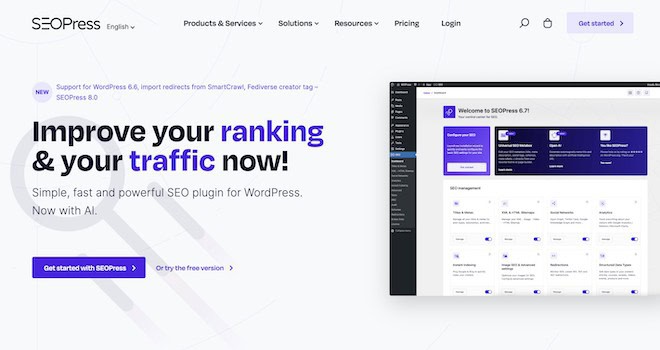
Practical Example
Consider a blog post about “10 Healthy Smoothie Recipes”. Here’s how you might implement these tips:
Title Tag & H1: “10 Delicious & Healthy Smoothie Recipes You Need to Try”
Meta Description: “Discover 10 easy-to-make smoothie recipes packed with nutrients. Perfect for a healthy breakfast or snack!”
Headings & Subheadings:
H1: “10 Healthy Smoothie Recipes”
H2: “1. Green Detox Smoothie”
H3: “Ingredients”
H3: “Instructions”
Internal Links: Link to related posts like “Benefits of Drinking Green Smoothies” or “5 Tips for Making Perfect Smoothies”.
By adhering to these on-page SEO practices, you set a solid foundation for each blog post to perform well in search engine rankings while providing an excellent user experience.
4. Structuring Your Blog Posts Effectively for Readability and SEO Benefits
Importance of a Clear and Logical Structure
A well-structured blog post is crucial for both user engagement and search engine optimization (SEO). When readers find your content easy to navigate, they are more likely to stay on your page longer, reducing bounce rates and signalling to search engines that your content is valuable.
Search engines prioritize user experience, rewarding well-structured content with higher rankings. A clear structure helps search engine crawlers understand the hierarchy and importance of information in your post, improving its chances of ranking well.
Recommended Formats for Introductions, Bodies, and Conclusions
Introduction
The introduction sets the stage for your entire blog post:
Hook: Start with an engaging statement or question to grab the reader’s attention.
Overview: Briefly outline what the post will cover.
Relevance: Explain why the topic is important to the reader.
Example: “Ever wondered why some blogs capture your attention while others make you hit the back button? The secret lies in their structure.”
Body
The body of your blog post should be logically divided into sections:
Subheadings: Use H2, H3 tags to break up content into digestible chunks.
Bullet Points/Numbered Lists: Highlight key points for better readability.
Short Paragraphs: Keep paragraphs concise to maintain reader interest.
Visuals: Incorporate images, charts, or videos to complement the text.
Example:
Subheading 1
Content relevant to subheading 1.
Subheading 2
Additional details under subheading 2.
Conclusion
Wrap up your blog post effectively:
Summary: Recap the main points discussed in the body.
Call-to-Action (CTA): Encourage readers to take a specific action, like commenting or sharing.
Final Thought: Leave readers with a thought-provoking statement or question.
Example: “Now that you’re equipped with these strategies, how will you structure your next blog post?”
By maintaining a clear and logical structure throughout your blog posts, you enhance readability and improve SEO performance simultaneously.
5. Crafting Catchy Titles That Drive Clicks and Optimized Meta Descriptions That Improve Visibility in Search Results
Creating compelling post titles and optimized meta descriptions plays a critical role in attracting readers and improving search engine visibility. Here’s how to master both:
Techniques for Creating Compelling Titles
Crafting a title that grabs attention without resorting to clickbait involves balancing creativity with relevance. Here are some effective strategies:
Use Numbers and Lists: Titles like “10 SEO Tips Every Blogger Should Know” tend to attract clicks because they promise specific, actionable content.
Ask Questions: Titles framed as questions, such as “How Can You Improve Your Blog’s SEO?”, pique curiosity and invite readers to find answers.
Incorporate Power Words: Words like “Ultimate,” “Essential,” and “Proven” add a sense of urgency and importance.
Keep It Concise: Aim for titles that are clear and concise, ideally between 50-60 characters. This ensures they are fully visible in search results.
Role of Primary Keywords in Title Effectiveness
Optimizing your title with primary keywords is essential for SEO success. It’s about finding the right balance between keyword usage and maintaining an engaging tone.
Place Keywords Strategically: Position your primary keywords towards the beginning of the title to ensure they are prominent. For example, “SEO Tips for Bloggers: Boost Your Traffic Now.”
Avoid Keyword Stuffing: Overloading your title with keywords can make it look unnatural and reduce its appeal. Keep it readable and user-friendly.
Balance Creativity with Optimization: While it’s important to include primary keywords, ensure the title remains compelling. For instance, “Master SEO: Essential Tips for Every Blogger” blends both elements effectively.
Optimized Meta Descriptions for Better Visibility
Meta descriptions provide a brief summary of your post in search results, influencing click-through rates. Crafting an optimized meta description involves:
Incorporating Keywords Naturally: Use your primary keyword within the meta description but integrate it naturally within the flow of text.
Keeping It Under 160 Characters: Ensure your meta description is concise yet informative, ideally under 160 characters, so it displays fully in search results.
Focusing on User Intent: Write descriptions that clearly convey what the reader will gain from clicking on your post. For example, “Learn the top 10 SEO tips every blogger should know to boost traffic and engagement.”
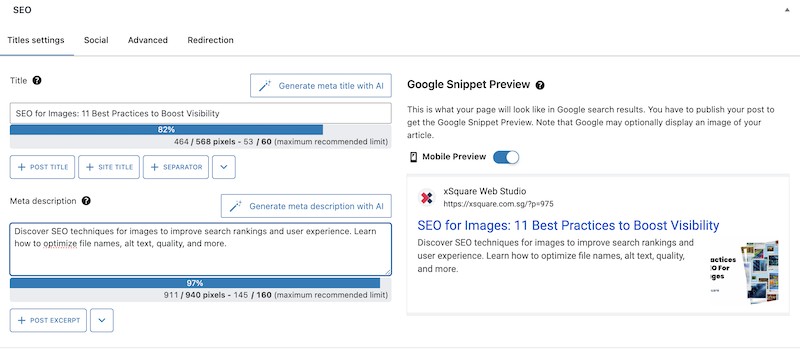
By focusing on these techniques, you can create post titles and meta descriptions that not only attract clicks but also enhance your blog’s visibility in search results.
6. Regularly Updating Your Content For Freshness And Relevance In Search Engines’ Eyes
Keeping your blog content fresh and relevant is a crucial aspect of an effective SEO strategy. Regular updates signal to search engines that your site is active and current, which can positively affect your site authority and rankings. Here’s how you can leverage this practice:
Benefits of Adding New Content Regularly
Improved Site Authority: Search engines favor websites that consistently provide updated information. By regularly adding new posts or updating older content, you demonstrate that your blog is a reliable source of up-to-date information.
Higher Rankings: Fresh content can lead to better rankings in search engine results pages (SERPs). When search engines see frequent updates, they are more likely to crawl your site often, leading to quicker indexing and potentially higher rankings.
Increased User Engagement: Frequent updates not only keep search engines happy but also engage your audience. Returning visitors will find new insights and information, increasing the likelihood of repeat visits.
Strategies for Keeping Content Fresh
Regularly Update Older Content: Revisit older blog posts to add new data, update statistics, or include recent developments in the topic area. This keeps the content relevant and valuable to readers.
Add New Posts Consistently: Establish a posting schedule that you can maintain, whether it’s weekly, biweekly, or monthly. Consistency helps build trust with both readers and search engines.
Repurpose Existing Content: Transform older posts into different formats such as infographics, videos, or podcasts. This not only gives a fresh take on existing material but also appeals to diverse audience preferences.
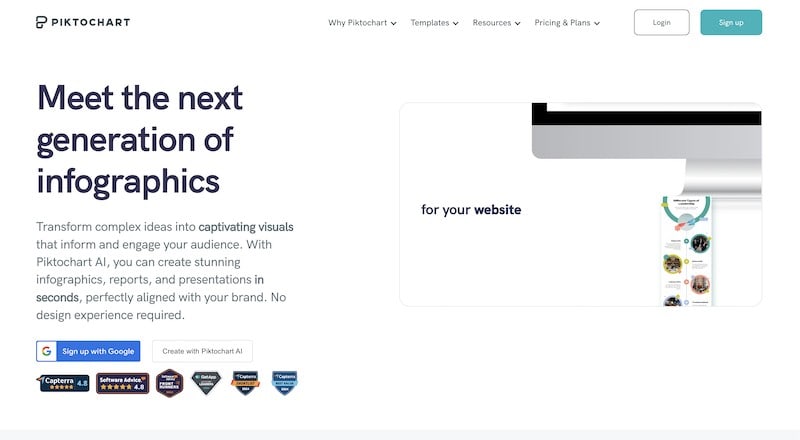
Practical Example
Imagine you have a blog post from two years ago discussing “Top SEO Trends”. Revisiting this post allows you to:
Update any outdated trends with current ones.
Add new sections based on the latest industry insights.
Refresh internal links by connecting to more recent articles you’ve published.
By integrating these practices into your blogging routine, you ensure that both search engines and your audience view your blog as a dynamic and valuable resource.
7. Optimizing Visual Content To Enhance User Experience And Improve Rankings In Image Searches
Including visual content in your blog posts serves multiple purposes beyond mere aesthetics. Visual content optimization plays a crucial role in enhancing user engagement and improving search engine rankings, particularly on Google Images.
Why Visual Content Matters
Readers are often drawn to well-placed images that break up lengthy blocks of text, making your content more digestible and engaging. High-quality visuals can:
Capture Attention: A compelling image can draw readers in and keep them engaged.
Improve Readability: Images help to segment information, making complex topics easier to understand.
Support SEO: Properly optimized images can improve your visibility on Google Images search results.
Best Practices for Visual Content Optimization
Use High-Quality Images: Always opt for high-resolution images that are relevant to your content. Poor-quality visuals can detract from the perceived value of your post.
Incorporate Alt Text: Alt text serves as a textual alternative to images, helping search engines understand what the image is about. Use descriptive alt text that includes primary keywords without keyword stuffing.
Optimize File Sizes: Large image files can slow down your page loading speed, affecting both user experience and search engine rankings. Use tools like TinyPNG or Shortpixel to compress images without sacrificing quality.
Use Descriptive File Names: Before uploading an image, rename the file with descriptive keywords related to the content. For example, instead of IMG_1234.jpg, use blogging-tips-seo.jpg.
Leverage Captions: Adding captions under images can provide context and enhance reader engagement.
Examples of Effective Image Use
Consider a blog post about “SEO Tips for Bloggers”. You might include:
Infographics: Provide a visual summary of key points.
Screenshots: Show how to use SEO tools like Semrush or Google Keyword Planner.
Charts and Graphs: Illustrate data trends or research findings

By incorporating these strategies, you not only keep readers engaged but also capitalize on opportunities to rank higher in image search results, thereby boosting overall SEO performance.
8. Ensuring Mobile Responsiveness For A Seamless User Experience Across Devices
Optimizing your blog for mobile devices is crucial in today’s digital landscape. A mobile-friendly design ensures that your blog provides a seamless user experience across various screen sizes and resolutions.
Key Elements of a Mobile-Friendly Blog Design
1. Responsive Design
Implementing a responsive design allows your blog to adapt to different screen sizes automatically. Tools like Bootstrap or CSS media queries can help create layouts that adjust fluidly across devices.
2. Fast Loading Times
Mobile users often have less patience for slow-loading pages. Minimize the use of heavy images, compress files, and leverage browser caching to improve load times.
3. Easy Navigation
Simplify the navigation menu for mobile users by using collapsible menus or hamburger icons. Ensure that buttons and links are large enough to be easily clickable on smaller screens.
4. Readable Text
Ensure that your text is legible on mobile devices by using larger font sizes and maintaining sufficient line spacing. Avoid small fonts and cramped paragraphs.
5. Touch-Friendly Elements
Design interactive elements such as buttons and forms to be touch-friendly. This means they should be large enough to tap easily without accidentally clicking nearby elements.
6. Viewport Meta Tag
Use the viewport meta tag in your HTML to control the layout on mobile browsers. This helps in scaling content appropriately based on the device’s screen size.
html
7. Avoid Flash and Pop-Ups
Flash isn’t supported on many mobile devices, and pop-ups can be intrusive on smaller screens. Opt for HTML5 instead of Flash, and use pop-ups sparingly or provide alternatives like slide-ins.
Benefits of a Mobile-Friendly Blog
Improved User Experience: A smooth, accessible experience keeps visitors engaged longer.
Higher Rankings: Google uses mobile-first indexing, meaning it predominantly uses the mobile version of the content for indexing and ranking.
Increased Traffic: With more people browsing on mobile devices, ensuring a mobile-friendly design can capture a larger audience.
Implementing these strategies ensures that your blog remains competitive in an increasingly mobile-centric world, providing an optimal user experience across all devices.
9. Building A Strong Link Profile Through Ethical Link Building Strategies
Creating a robust link profile is a cornerstone of effective SEO. Backlinks, or incoming links from other websites, serve as endorsements for your content’s credibility and relevance. However, not all backlinks are created equal.
Quality Over Quantity
While it might be tempting to accumulate as many backlinks as possible, focusing on quality is far more beneficial. High-quality backlinks come from reputable and authoritative websites within your niche. These links signal to search engines that your content is trustworthy and valuable.
Characteristics of High-Quality Backlinks
Relevance: Links from sites related to your blog’s topic are more valuable.
Authority: Links from high-authority domains (e.g., established industry blogs or news sites) carry more weight.
Natural Placement: Organically acquired links are better recognized by search engines than those obviously placed for SEO purposes.
Ethical Link Building Strategies
Engaging in ethical link building ensures that you avoid penalties from search engines while building a strong link profile:
Guest Blogging: Contribute high-quality articles to reputable blogs in your niche with a backlink to your site.
Create Shareable Content: Publish infographics, comprehensive guides, or unique research that others find valuable enough to link back to.
Networking: Build relationships with influencers in your industry who may share your content with their audience.
Broken Link Building: Identify broken links on other sites and offer your content as a replacement.
Monitoring Your Backlink Profile
Using tools like Google Search Console or Ahrefs helps you track the quality and quantity of your backlinks. Regular monitoring allows you to disavow any low-quality or spammy links that could harm your SEO efforts.
Building a strong link profile through ethical strategies not only boosts your search engine rankings but also enhances the trustworthiness and authority of your blog within its niche.
10. Monitoring Your Ongoing SEO Performance With Analytics Tools To Make Data-Driven Improvements Over Time
Tracking and analyzing your SEO performance is crucial for understanding how well your strategies are working and where there’s room for improvement. Reliable analytics tools like Google Search Console, Google Analytics, and SEMrush’s Site Audit feature provide invaluable insights into various key performance metrics.
Key Metrics to Monitor
1. Organic Traffic Growth
Definition: The number of visitors arriving at your blog via unpaid search results.
Importance: A steady increase in organic traffic indicates that your SEO efforts are paying off.
Tools: Google Analytics provides detailed reports on organic traffic, including the sources, demographics, and behavior of your visitors.

2. Keyword Rankings Fluctuations
Definition: Changes in the position of your target keywords in search engine results pages (SERPs).
Importance: Monitoring keyword rankings helps you understand which terms are performing well and which need more attention.
Tools: Google Search Console allows you to track keyword rankings over time, offering insights into impressions, clicks, and click-through rates (CTR).
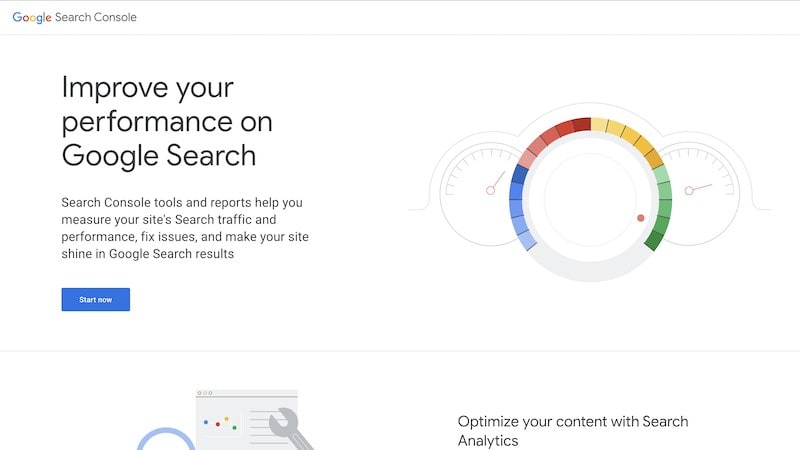
3. Bounce Rate
Definition: The percentage of visitors who leave your site after viewing only one page.
Importance: A high bounce rate may indicate that visitors aren’t finding what they’re looking for on your blog.
Tools: Google Analytics provides bounce rate data for individual pages.
4. Average Session Duration
Definition: The average amount of time a visitor spends on your blog during a single session.
Importance: Longer session durations generally indicate more engaging content.
Tools: Google Analytics tracks session duration, helping you identify which posts keep readers engaged.
Utilizing Analytics Tools
Google Search Console
Google Search Console is an essential tool for any blogger aiming to monitor SEO performance. It offers:
Search Performance Reports: Shows which queries bring users to your site, allowing you to optimize for those keywords.
Index Coverage: Highlights issues that prevent search engine bots from indexing your pages effectively.
Mobile Usability Reports: Ensures that your blog is mobile-friendly, a critical factor for user experience and SEO.
Example: If you notice a sudden drop in impressions or clicks for a particular keyword, you can use the Search Performance report to investigate potential causes, such as increased competition or changes in search intent.
Google Analytics
Google Analytics provides comprehensive data about user behavior on your site:
Audience Reports: Demographic details about your visitors help tailor content to their preferences.
Behavior Flow: Visualizes the path users take through your site, identifying popular content and potential drop-off points.
Conversion Tracking: Measures specific goals like newsletter sign-ups or product purchases.
Example: By examining the Behavior Flow report, you can identify pages with high exit rates and optimize them to improve user retention.
SEMrush Site Audit
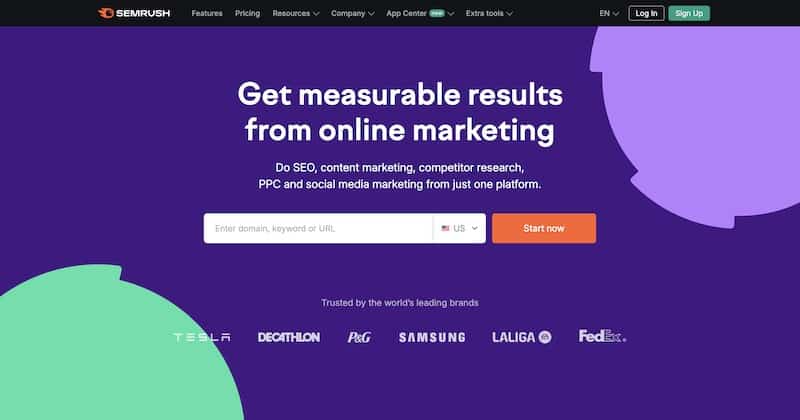
The SEMrush Site Audit feature offers technical insights into your blog’s health:
Crawlability Reports: Identifies issues that might prevent search engines from efficiently crawling your site.
On-page SEO Checks: Highlights missing meta tags, duplicate content, and other on-page issues.
Backlink Analysis: Evaluates the quality and quantity of backlinks pointing to your blog.
Example: A crawlability report might reveal broken links or slow-loading pages that need fixing to enhance both user experience and search engine ranking.
SEMrush Site Audit
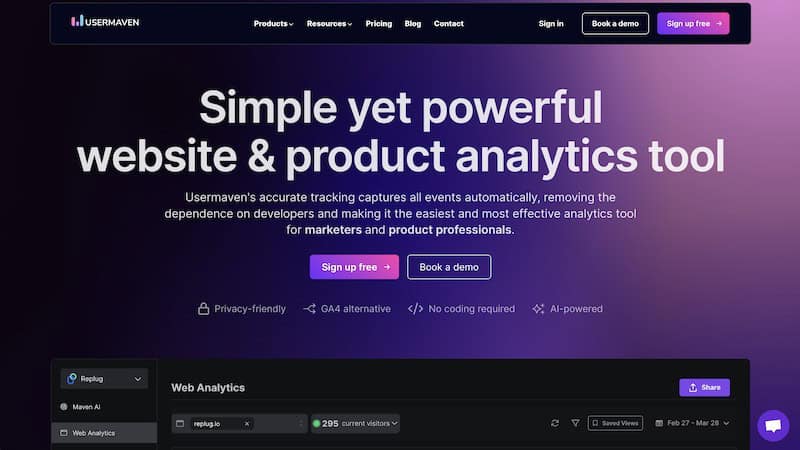
Usermaven is a powerful and user-friendly website and product analytics tool designed to provide comprehensive insights without the complexity:
Website Analytics: Real-time, user-friendly analytics simplify daily metric checks and help optimize your website performance.
Privacy-Focused Approach: Usermaven is GDPR and CCPA compliance, EU hosting, and optional cookie-less analytics.
Simplified Interface: Usermaven offers a more user-friendly interface than Google Analytics, making it easier for bloggers to gain comprehensive website analytics.
Example: Using Usermaven’s Website Analytics, you can quickly identify your top-performing pages and traffic sources. This allows you to focus your efforts on optimizing your content strategy .
Making Data-Driven Improvements
Regularly monitoring these metrics allows you to make informed decisions about future content and SEO strategies:
Identify underperforming keywords and create new content targeting those terms.
Optimize high-bounce-rate pages by improving readability or adding engaging media like images or videos.
Update older posts with current information to maintain relevance and boost rankings.
Analytics tools provide the data necessary for continuous improvement, ensuring that every aspect of your blog aligns with best SEO practices.
Take Action And Start Implementing These 10 Essential Tips For Blogging Success!
Using these SEO tips can transform your blogger blog, boosting its visibility in search engine results and driving more organic traffic. By focusing on:
Keyword Research: Identify terms your audience is searching for using tools like Semrush.
High-Quality Content: Create informative, engaging posts that meet reader needs.
On-Page SEO: Optimize headings, meta descriptions, and images.
Readability: Use clear structures and formatting to enhance user experience.
Internal Linking: Connect related posts to improve navigation and SEO.
Regular Updates: Keep content fresh to signal activity to search engines.
Mobile Optimization: Ensure a seamless experience across all devices.
Visual Content: Include images with alt text to improve rankings in image searches.
Link Building: Build a strong link profile with quality backlinks.
Performance Monitoring: Use analytics tools to track progress and make data-driven improvements.
These strategies are actionable steps you can start implementing today. Begin by conducting keyword research for your next post or optimizing an existing one for on-page SEO. Regularly update old content with new insights or perspectives. Make sure your blog is mobile-friendly and visually appealing.
Adopting these practices consistently will help you achieve long-term success. Remember, SEO is an ongoing process that requires dedication and regular adjustments based on performance metrics. Stay proactive, keep learning, and watch your blog’s visibility soar in search results!
If you need SEO assistance, check out our SEO service page.